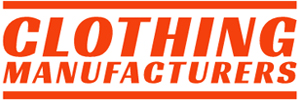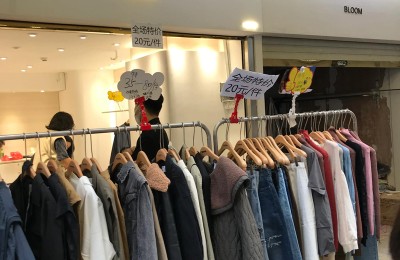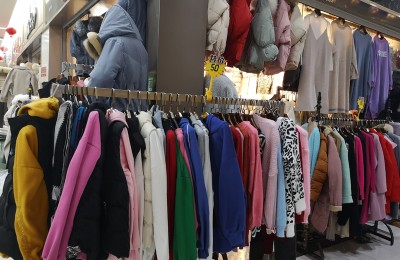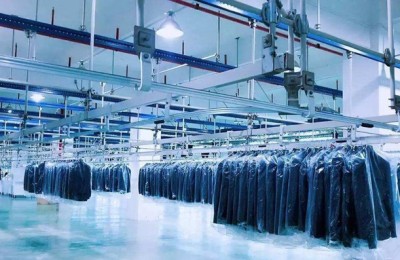Analysis and Overcoming of White Defects at the Bottom of Printed Corduroy
Analysis and Overcoming of White Defects at the Bottom of Printed Corduroy
On printed fabrics, part of the pattern does not receive enough printing paste, causing the color of this part to be lighter, showing a small white core, or the color paste cannot be printed to expose the background color of the pre-printed semi-finished product, which is called an exposed bottom defect. sick. Printed velvet sometimes has the above-mentioned printing defects during printing, but sometimes when the object is laid flat, there is no such thing as the lighter color, the appearance of small white cores, or the exposure of the bottom of the pre-printed semi-finished product. However, If the fabric is folded or scratched on the surface of the fabric with fingers, white spots will appear at the bottom of the deeper pits, which is called pit bottom white spots. If this kind of fabric is used to make clothes, white will appear on the placket, cuffs, pockets or other places that need to be folded, affecting the appearance of the garment. For this reason, corduroy fabrics should be overcome during the printing process to ensure the improvement of printed materials.
The pit blemish is essentially a special form of pit blemish. Understanding the causes of printed fabric bottom leakage and how to overcome it will be of great benefit to overcoming the problem of bottom leakage.
The main reason for the exposed bottom defect is that there is not enough printing color paste in the pattern of the printed fabric. There are many reasons for insufficient pulp supply, such as the quality of printing semi-finished products, mesh selection and engraving, printing technology, printing pulp performance, printing machine operation and other factors.
Individual causes of bottom exposure
1. The quality of pre-press semi-finished products does not meet the requirements. The quality of fabric pre-processing fails to meet the printing requirements, such as poor desizing, poor scouring, insufficient mercerization, etc., which will affect the fiber’s uniform absorption of printing paste and poor capillary effect, resulting in bottom defects.
2. Improper mesh selection. When selecting mesh, meshes with different mesh specifications are not reasonably selected according to the size of the pattern area and the characteristics of the pattern. When printing a larger-area pattern, if the mesh used is relatively high, the printing paste extruded from the mesh will not be able to meet the needs of the pattern parts of the printed fabric, resulting in bottom-out defects in the pattern.
3. The rotary screen plate making quality is not good.
(1) The mesh of the rotary screen is not clear or the mesh is too small. The main reason for this problem is that during the rotary screen plate making process, when applying photosensitive glue, the viscosity of the photosensitive glue is too low and the density is not enough. The glue penetrates into the inner wall of the rotary screen and is not completely removed after development, resulting in partial patterns. The mesh is stained by the glue layer that has been fully formed into a film, which hinders the transfer of printing paste to the printed fabric. The amount of paste supplied to the pattern part of the printed fabric is affected, resulting in the bottom of the printing.
(2) The glue liquid undergoes preliminary polymerization when the ballpoint pen net is drying. After the rotary screen is coated with photosensitive adhesive, it needs to go through a drying process before sunset. The drying temperature is low, and there are certain regulations on the drying time. If the low-temperature drying time is too long or the temperature is too high, the photosensitive adhesive layer will be damaged. Under the influence of drying conditions, the initial polymerization of the glue changes the original soluble glue layer into an insoluble glue layer. After exposure, during development, the glue layer in the rotary screen pattern part is difficult to clean, shrinking the mesh, causing insufficient pulp supply during the printing process, resulting in the occurrence of bottom defects.
4. Improper selection or use of printing scrapers and magnetic rods. The thickness and width of the printing scraper; improper selection of the magnet bar and magnetism; or the scraper pressure, magnetism, etc. are not adjusted to the scraping conditions suitable for the printing paste, resulting in insufficient fullness of the pattern paste and resulting in exposed bottom.
5. Improper storage or use of adhesives. For the adhesive used in the pigment printing process, due to improper control of the conditions of the adhesive during the polymerization process, too long storage time, or poor storage conditions, such as high temperature exposure under strong sunlight, the content of the adhesive in the adhesive will Water evaporates, or the particles collide with each other due to movement, causing the particles to condense and precipitate, and the quality of the adhesive itself is affected. The color paste prepared with such an amount of adhesive can easily block the mesh of the ballpoint pen mesh pattern. Although pressure is applied during the printing process, it will hinder the seepage of the color paste, which may cause partial exposure of the bottom, or cause the pattern to be incomplete.
6. The consistency of the color paste is improperly used. In order to ensure the clarity of the printing outline when printing fabrics, the printing paste generally used is relatively dense, but has poor permeability. For some printed fabrics that require a high amount of paste and good permeability, the consistency of the printing paste must be reasonably selected and determined. Reduce the density of the color paste while ensuring the printing outline and printing effect, otherwise it is easy to cause bottom defects.
7. After printing, the remaining pulp on the web has not been cleaned. After printing, the color paste remaining on the web should be rinsed clean. Pay special attention to rinsing the color paste around the mesh. If the work is sloppy, the color remaining around the mesh will dry up and stick to the edges of the mesh, making the mesh smaller. When copying again, the smaller mesh makes the color flow less smooth, making it easier to produce bottom-out defects.
Measures to overcome exposed bottom defects
Overcoming the exposed bottom defect mainly focuses on ensuring that the printed parts of the fabric can obtain enough printing paste. The following measures can be taken:
1. Effectively ensure the quality of printed semi-finished products. In order to overcome and reduce the occurrence of exposed bottom defects, the quality of the bleached semi-finished products must be uniform and consistent. The ideal bleached semi-finished product should meet the following requirements:
(1) The key to the desizing process is to coat the fabricAll the slurry is removed.
(2) The blanching process must not only be “cooked thoroughly and bleached white”, but also must highlight the word “even”. The capillary effect of the fabric after scouring reaches more than 8CM.
(3) For mercerized fabrics, the mercerization should be uniform and the alkali removal should be complete. The pH value of the mercerized fabric should be controlled within 7-8 or within the required range.
2. Reasonably choose printing mesh. The mesh selection should be determined based on the structure of the pattern, the size of the pattern area, the thickness of the printed fabric and the performance of the color paste. According to general rules, the mesh size should be 80 mesh for large ground patterns, 80-100 mesh for medium-sized patterns, 100-105 mesh for small surfaces and patterns, and fine patterns such as fine lines and tiny ones. The reason why a lower mesh circle is used for large-area, all-over-the-floor patterns is because its opening rate is relatively high, that is, the mesh is larger, which is conducive to the printing paste being squeezed out of the mesh and transferred to the printing machine at the same time. printed matter. For some patterns that require higher definition of the pattern outline, in order to prevent the lower mesh from producing “jagged” pattern edges during the printing process, you can choose 125 mesh to set the pattern outline, and then use 80 mesh or 100 mesh The solution is to add a screen.
The advent and production of Penta net and NoVa net have improved the opening rate to a certain extent, and the mesh number is above 100 mesh. Because the price is relatively expensive, especially the Naofu net, the Pent net is currently mainly used in some high-tech applications, and the Naofu net is currently rarely used in China.
The mesh of the rotary screen is not clear. If it is caused during electroforming, this kind of rotary screen cannot be used for printing.
3. Correctly perform rotary screen plate making operations.
(1) Carefully perform the rounding operation of the rotary screen. After deep-scraping the photosensitive adhesive on the rotary screen, the low-temperature drying time should not be too long and the temperature should not be too high to prevent the initial polymerization and solidification of the glue from clogging the mesh.
(2) Strictly prepare the photosensitive glue, strictly control the dosage of various chemicals, and master the viscosity of the photosensitive glue.
(3) The speed of the glue application machine and the insulation temperature of the rotary screen must be appropriate. Generally, the glue is scraped at 10-12cm/min, and the maximum speed cannot exceed 15cm/min. The temperature of the rotary screen is controlled at 40-50 degrees Celsius.
(4) After development, the film can be soaked in warm water at 40-50 degrees Celsius for about 20 minutes in a horizontal developing tank to swell the unexposed adhesive layer and dissolve the adhesive film. This will ensure the clarity of the mesh and the smooth transfer of printing paste to the fabric.
4. Select and use printing scrapers rationally. When printing thick fabrics or large-area patterns, a wider and thicker 50mm×0.2mm scraper should be used; or a thicker magnetic rod or larger magnetic knife should be used to increase the amount of pulp for scraping printing. At the same time, you can also use the method of lining the blade or adjusting the pressure and angle of the scraper to increase the amount of color paste squeezed into the printed fabric, which has a significant effect on improving and overcoming exposed bottoms.
5. Select and use dyes reasonably. Printing paste should use original paste with better rheological and thixotropic properties. Such as low viscosity sodium alginate paste. Alginate sodium galemulsified paste, compound paste, etc. Original paste or residual slurry that has been stored for a long time and has been hydrolyzed cannot be used.
The adhesives used in pigment printing and various other dyes and chemical materials must be carefully managed during storage. Store in a ventilated place away from direct sunlight. When preparing color diplomats, carefully observe the appearance quality of adhesives and various dyes. If any abnormal phenomena such as swelling, folding, precipitation or film formation are found, they cannot be used for preparation without testing. Printing paste.
When preparing printing color paste, you must strictly follow the color paste preparation and precautions. The prepared color paste must be filtered to prevent fine particles of debris from mixing in the color paste and blocking the mesh, causing bottom defects.
6. Pay attention to the screen washing work after the printing lofting is completed or the printing is completed. The screen must be rinsed clean to prevent residual slurry from remaining on the screen. This is to ensure that the quantity for printing or copying large quantities of goods in the future is consistent with that of this printing. Prevent the mesh from becoming smaller due to the adhesion of residual slurry to ensure the smoothness of the color slurry. duy9SdU
Disclaimer:
Disclaimer: Some of the texts, pictures, audios, and videos of some articles published on this site are from the Internet and do not represent the views of this site. The copyrights belong to the original authors. If you find that the information reproduced on this website infringes upon your rights, please contact us and we will change or delete it as soon as possible.
AA




